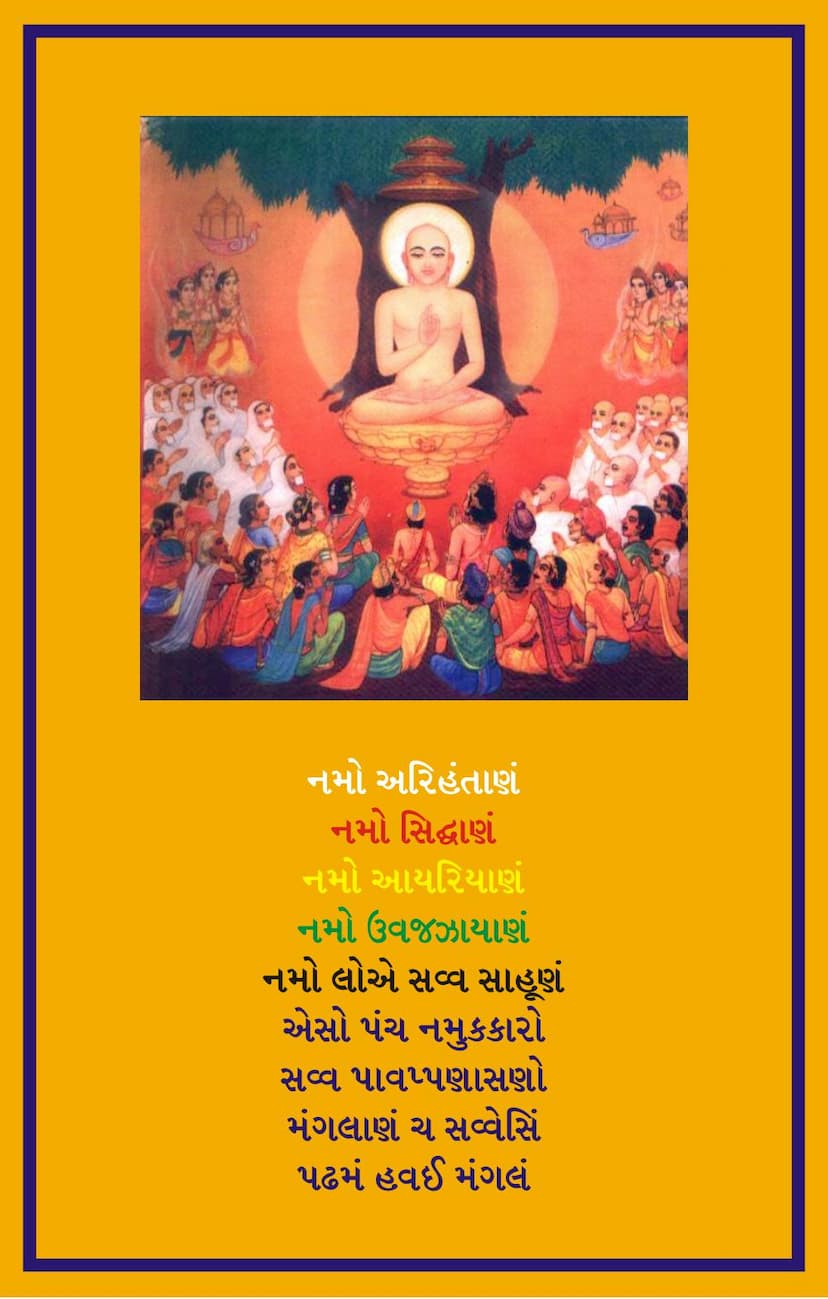Agam 15 Upang 04 Pragnapana Sutra Part 02 Sthanakvasi
Added to library: September 1, 2025

Summary
Here's a comprehensive summary of the provided Jain text, "Agam 15 Upang 04 Pragnapana Sutra Part 02 Sthanakvasi," authored by Ghasi Lal Maharaj, focusing on the content presented in the English translation of the Gujarati text:
Book Title: Agam 15 Upang 04 Pragnapana Sutra Part 02 Sthanakvasi Author: Ghasilal Maharaj Publisher: A B Shwetambar Sthanakvasi Jain Shastroddhar Samiti
Overall Context:
The provided text is the second part of the "Pragnapana Sutra," a significant Jain scripture. This particular volume is presented with an exposition ("Vyakhyana") by Acharya Ghasi Lal Ji Maharaj and includes Hindi and Gujarati translations. The publication is a project of the Akhil Bharat Shwetambar Sthanakvasi Jain Shastroddhar Samiti, indicating its focus on preserving and disseminating Jain scriptures within the Sthanakvasi tradition.
Key Themes and Content:
The initial pages (1-7) of the provided text focus on the foundational elements of Jainism and the publication itself:
- Invocation: The text begins with the traditional Jain invocation, "Namo Arihantanam," "Namo Siddhanam," etc., acknowledging the five supreme beings (Pancha Namaskara), which is considered highly auspicious and capable of destroying sins.
- Publication Details: It highlights the "Jain Agam Prakashan Yojana" (Jain Scripture Publication Project) under the guidance of Acharya Ghasi Lal Ji Maharaj. It mentions the organizer, Shri Chandra P. Doshi, and the website www.jainagam.com, indicating a commitment to making these texts accessible.
- Gratitude to Donors: Page 7 specifically thanks Shri Manilal Popatal Borah for his generous financial contribution of Rs. 5001/- towards the publication of the "Pragnapana Sutra," recognizing his dedication to preserving Jain scriptures. It also provides a brief biographical sketch of Manilal Borah, highlighting his religious devotion, adherence to vows, and memorization of important scriptures. His wife, Rambhaben, is also mentioned for her religious support and practices.
- Rules for Studying the Sutra (Pages 8-13): A significant portion of the provided text details specific guidelines for the study (Swadhyaya) of the "Pragnapana Sutra," particularly the original Sanskrit/Prakrit text. These rules are categorized into:
- Timing: When to study (first and fourth quarters of day and night) and when not to study (pre- and post-sunrise/sunset periods, midday, midnight).
- Specific Prohibitions: Avoid studying during specific astrological or environmental occurrences like meteor showers (Ulkapata), unusual atmospheric colors (Digdaha), loud thunder (Garjarava), celestial sounds (Nirghata), lightning flashes (Vidyut), specific lunar phase phenomena (Yupak), unusual celestial lights (Yakshadipta), fog (Dhumika Krishna, Mahika Shweta), and dust storms (Rajoudghata).
- Purity: Rules regarding physical and ritual purity, including avoiding study during menstrual periods or in the presence of menstruating women.
- Exceptions: It clarifies that these "Aswadhyaya" (non-study) rules apply to the original text, not necessarily to translations. It also emphasizes the importance of adhering to the wishes of elders or gurus during such times.
- Table of Contents (Pages 13-16): The provided pages include a detailed table of contents for the second part of the "Pragnapana Sutra," outlining the chapters (Pads) and their respective topics. The third chapter, "Alpabahutva" (Ratios of Fewness and Muchness), is particularly detailed, covering various aspects of classification and quantification of living beings and substances. This includes:
- Classification based on directions (Digdwar).
- Classification based on modes of existence/migration (Gatidwar).
- Classification based on the number of senses (Indriyadwar).
- Classification based on life-forms (Kayadwar - subtle and gross).
- Classification based on energies (Yogadwar).
- Classification based on sentiments (Vedadwar).
- Classification based on passions (Kashayadwar).
- Classification based on subtle karmic sheens (Leshya).
- Classification based on right belief (Samyaktwadar).
- Classification based on knowledge (Jnanadwar).
- Classification based on perception (Darshanadwar).
- Classification based on control over senses and actions (Samyatadwar).
- Classification based on functional activities (Upayogadwar).
- Classification based on sustenance (Aharadwar).
- Classification based on speech (Bhashakadwar).
- Classification based on completeness (Paryaptadwar).
- Classification based on subtlety (Sukshmadwar).
- Classification based on consciousness (Sannidwar).
- Classification based on existence (Bhavadwar).
- Classification based on the final existence (Charamadwar).
- Classification based on the nature of life (Jivadwar).
- Classification based on region (Kshetradar).
- Classification based on karmic bondage (Bandhadwar).
- Classification based on matter (Pudgaladwar).
- Classification based on the "Great Stick" (Mahadandak - a cosmological concept).
- Classification based on lifespans (Mahadandakanusar).
The bulk of the provided text (starting from page 16) then delves into the specific classifications within the third chapter ("Alpabahutva"), beginning with the "Digdwar" (Directional Classification).
- Directional Classification (Digdwar - Page 18 onwards): The text begins to elaborate on the comparative numbers of beings ("Alpabahutva") in different directions (West, East, South, North). It explains that the directionality is based on the Ruchi (a cosmological concept) and the distribution of beings, particularly the gross (Bhadra) beings, influenced by factors like the presence of vegetation (Vanaspati Kayika) which depends on water. The explanation highlights the concept of subtle versus gross beings and how their distribution varies. The summary then goes into detailed comparisons across different life forms (Earth-bodied, Water-bodied, Fire-bodied, Air-bodied, Vegetation-bodied, two-sensed, three-sensed, four-sensed, hell-beings, celestial beings, etc.) in relation to direction and the number of creatures.
Significance:
The "Pragnapana Sutra" is known for its detailed cosmological and philosophical discussions within Jainism. The "Alpabahutva" chapters, as presented here, are crucial for understanding the Jain worldview concerning the relative quantities and distributions of various forms of life and substances across the universe. The emphasis on precise rules for scripture study also underscores the importance of methodical and respectful engagement with these sacred texts in the Sthanakvasi tradition.
In essence, this part of the "Pragnapana Sutra" serves as a foundational text for understanding Jain cosmology, ethics (through study rules), and the comparative existence of different entities in the universe, all presented with scholarly commentary and translations.